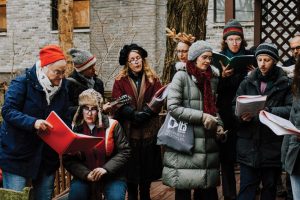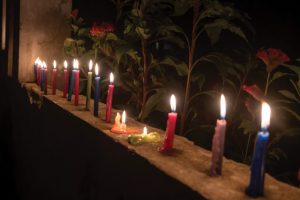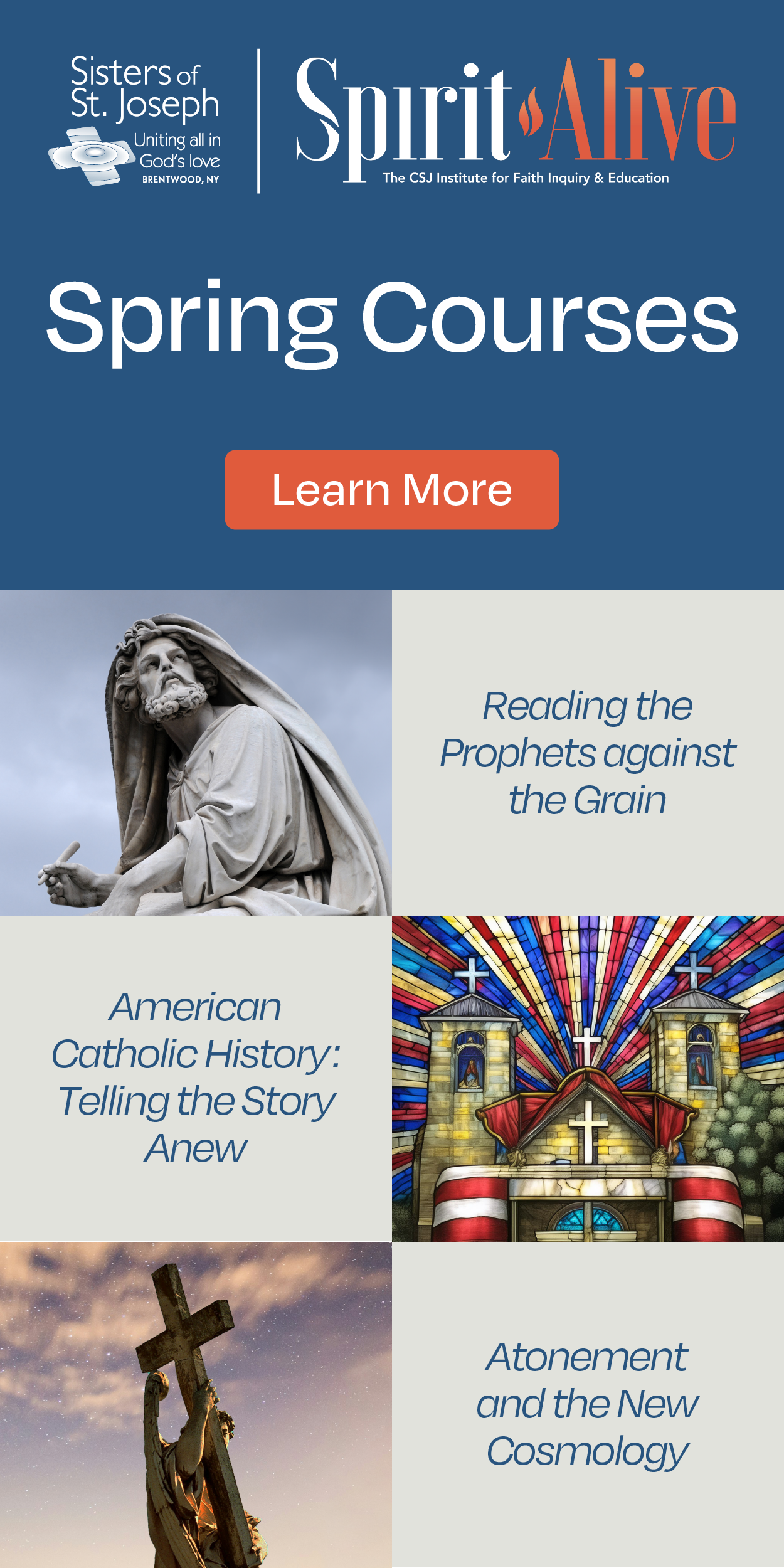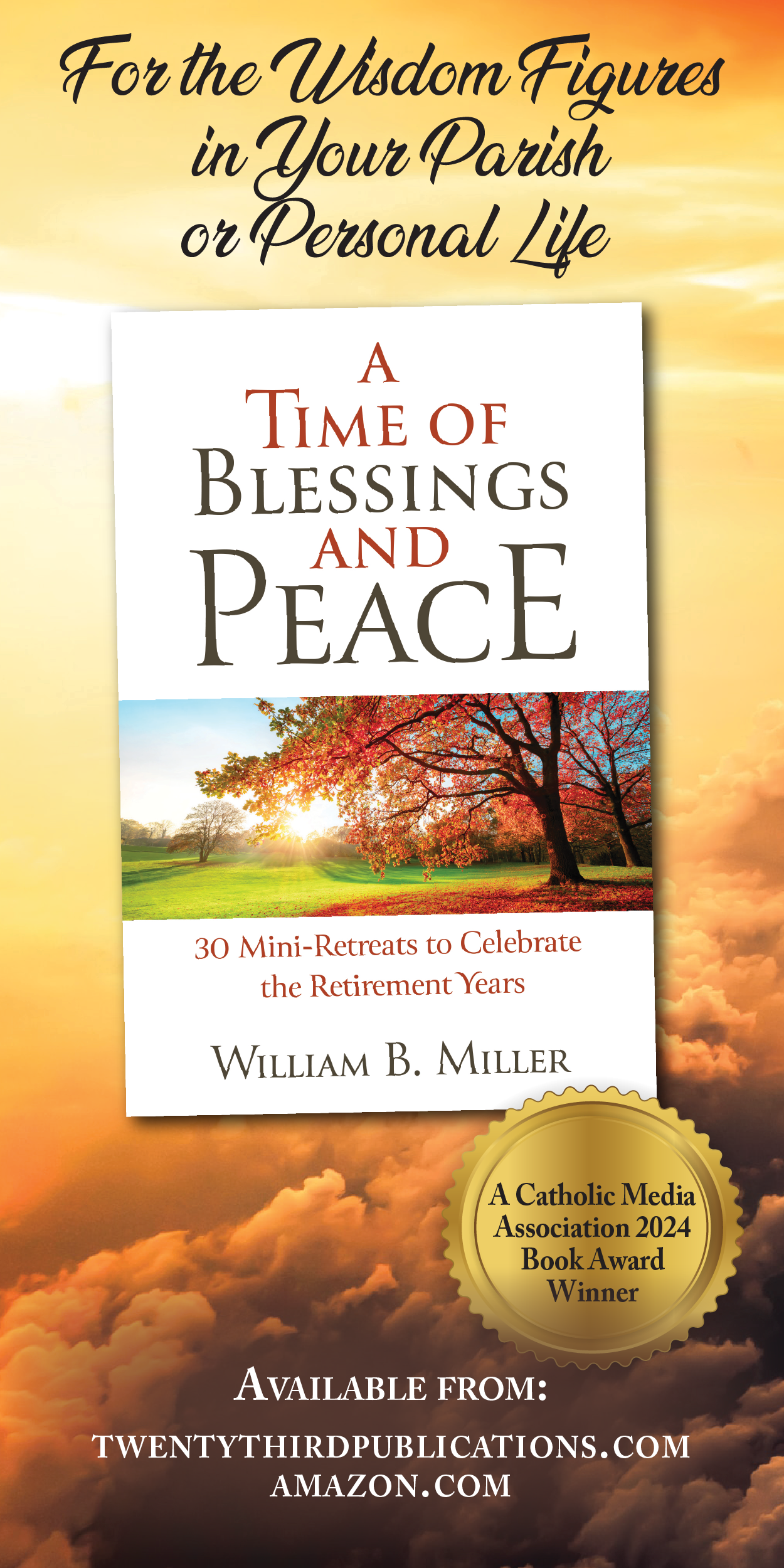On Tuesday evenings, a group of young adults streams into a storefront on Chicago’s North Side that doubles as an art gallery and events venue. They settle into rows of red and yellow plastic chairs as a jazz trio plays a bouncy rendition of “You’ve Got a Friend.” When the music stops, a man and woman walk to the front of the room and sit on stools. They read a brief meditation from a book called Stillness Speaks then launch into what is partly a dialogue, partly a homily on healthy relationships.
“When you allow people to be who they are, they begin to change,” Nathan Wright, one of the evening’s coleaders, tells the gathering.
The Tuesday night get-togethers are sponsored by the Bodhi Center. The name means “awakened” or “enlightenment.” The center is just one of an increasing number of communities attracting young adults who eschew traditional religion yet still desire some form of spiritual sustenance.
Alternative and experimental communities are popping up across the United States—in gyms, storefronts, and restaurants, around dining room tables, and on Zoom calls. They aim to meet a key yearning for many religiously unaffiliated young adults: the desire for community.
The Bodhi Center has about 500 members, according to its founder Lola Wright. A large number are Millennials—people born roughly between 1981 and 1996. Wright estimates that about 40 percent of the Bodhi Center’s regulars are ex-Catholics.
More than a third of Millennials identify as so-called “Nones”—people who describe themselves as having no particular faith tradition. The Pew Research Center identifies Nones as one of the fastest growing groups in the U.S. religious landscape. In a 2014 study, some 16 percent of Americans described their religion as “nothing in particular,” up from 12 percent in 2007.
Religious disaffection among the young has been growing for decades across faith traditions. “One thing that has changed is that people are being more honest about their disaffection,” says John Poitevent, director of programs for Parish Catalyst, a Los Angeles-based, nonprofit parish renewal group.
“Where previous generations would check the ‘religion box’ because they grew up that way, this is less often the case,” Poitevent says.
What hasn’t changed is a young adult yearning for community. Still, Millennial Nones represent both a dilemma and a paradox for traditional churches. They might eschew formal worship services, reject patriarchal structures, and disagree with traditional teachings on such issues as homosexuality, marriage, and family. Yet 1 in 3 Millennials says religion is “somewhat important” to them, and 1 in 5 prays daily, according to “How We Gather,” a study by Harvard University researchers Angie Thurston and Casper ter Kuile.
“There is a hunger for connection to something larger than ourselves,” says recent Harvard Divinity School graduate Katie Gordon, who was raised Catholic and now describes herself as a seeker unaffiliated with any particular tradition.
Wright, the Bodhi Center’s founder, says her community appeals to young adults because it is “all about connectedness . . . bringing together people who might otherwise not meet.” Her own spiritual journey epitomizes the yearnings of many in her generation. Wright grew up Catholic, attending parochial school and Loyola University Chicago. She admired her grandmother, who was active in social justice causes.
“A lot of the character values I possess were informed by going to Catholic schools,” Wright says.
As a teen, she parted ways with Catholicism, put off by its male hierarchy and what she felt was a “lack of compassion” toward the LGBTQ community. She studied other faiths and came to the same conclusion: All organized religions suffer from a fundamental problem. “Religious constructs haven’t changed significantly in 2,000 years,” she says. “Churches haven’t figured out how to reach people where they are and address what they are really dealing with.”
Formal theology is largely absent from the Bodhi Center, but spiritual messages are not. Wright describes the center as a “conscious community of people interested in bringing greater self-awareness to themselves and the impact they have on their community.” The center used to offer a worship-style service on Sundays, but stopped in favor of having community members use that time to work on social service projects, such as distributing bag lunches to those experiencing poverty and homelessness.
This approach appeals to Leah Anderson, an occupational therapist whose religious background stems from the evangelical Christian tradition. She says of the Bodhi Center, “They cut out dogma and tradition and boiled it down to the art of transformation.” Being an “embodied witness of Jesus in the world,” Anderson says, is more meaningful to her than “doing exegesis on some scriptural text that can be interpreted in 10 different ways.”
One of the fastest growing new communities is Nuns & Nones, which connects Millennials from spiritually diverse backgrounds with members of Catholic women’s religious communities. They meet in person and on monthly online Zoom calls. Topics of conversation range from building community to responding to today’s most urgent social issues.
Some women’s religious orders, including the Benedictines and Sisters of Mercy, are allowing Nones to live in their religious communities for a specified period of time to learn firsthand about their spiritual practices and values. “The Catholic sisters have shown a radical hospitality toward young adult seekers,” says Katie Gordon, the coordinator of Nuns & Nones.
Poitevent of Parish Catalyst says three key themes consistently emerge in listening sessions with Millennials: the search for authenticity, a sense of purpose, and the desire for community. “For churches to reconnect with young adults, we need to lean into those three things. That’s what church is called to be, an authentic, purpose-filled community,” he says. “We don’t have to be something we’re not. We have to get back to who we are.”
Indeed, many young adults are still drawn to aspects of the faith they left behind.
Gordon of Nuns & Nones says contemplative practices, such as centering prayer, and some monastic traditions, including lectio divina, the slow, meditative reading of spiritual texts, appeal to young adults who remain open to both traditional and new spiritual movements percolating from the ground up.
Gordon spent time living with the Benedictine sisters of Mount St. Benedict Monastery in Erie, Pennsylvania. The ancient monastic vow of stability, she says, addresses a hunger for rootedness among many of her peers. “So many in my generation are living transient lives,” she adds.
Many are also drawn to the distinctly Benedictine vow of conversatio morum, or conversion of life. “It relates to seeking change for the better. It’s a commitment I carry with me every day,” Gordon says.
Breanna Mekuly describes herself as a seeker who remains Catholic “in my bones.” She also reflects some of the paradoxes surrounding her generation’s search for a spiritual grounding.
Growing up, she says, “I felt like to be a good Catholic—to be loved by God—meant I needed to follow all the rules. I lived in a very good-bad dualistic reality that I believed was based in religion.” A turning point came during her undergraduate studies at St. Norbert College in De Pere, Wisconsin, where she says she was inspired by the Norbertine concept of communio, the idea of community with God at the center.
Mekuly went on to pursue a master’s degree in theology at Vanderbilt University but continued to struggle with what she describes as “interpretations of teachings that prioritize androcentrism, heteronormativity, and patriarchal systems.” Encounters with those who felt hurt or rejected by the church, she adds, “made it harder to feel like the Catholic institution was a place that made sense for me.”
Another turning point came in 2016 when Mekuly completed a 10-week internship at the Benedictine monastery in Erie. She remained in Erie to work with the sisters in their social justice ministries and has since moved into a house near the monastery.
“Being in Erie, surrounded by the community of Benedictines, made a lot of sense to me,” Mekuly says. “It seemed a place where I could explore my Catholicism and spirituality with others who looked at the world in a similar way—one focused on listening with the ear of the heart, acting in accordance with Catholic social teaching, while also providing communal space for women to grow into strong, faithful, spiritual seekers.”
Mekuly says she now realizes what she was seeking all along: “A community of people who desire to live in a way that supports the dignity of all people and creatures, especially the vulnerable and oppressed. And I’m finding it.”
Still, Mekuly might be more of an exception than the rule. Catholic parishes have lost an estimated 5.4 million people between the ages of 15 and 25 in recent decades, according to “Going, Going, Gone: The Dynamics of Disaffiliation in Young Catholics,” a 2017 study sponsored by Saint Mary’s Press in Winona, Minnesota and the Center for Applied Research in the Apostolate at Georgetown University in Washington, D.C.
The study proved a wake-up call for many pastors. As a result, a growing number of parishes are taking up the challenge posed by Millennials and seeing it as an opportunity.
In the fall of 2019, the board of directors of Saint Mary’s Press established the Springtide Research Institute for Religion and Young People. Its goal: “To explore the intersection between the religious longings of young people and the human need for belonging, connection, and meaning-making,” says Springtide chief executive officer John Vitek.
“The institute is largely an initiative to pay attention, listen, and give the experience of young people a voice,” Vitek adds.
Researchers have identified an increasing sense of loneliness among the young, particularly those between the ages of 13 and 25. One challenge for traditional faith communities, Vitek says, is that young people “are looking for connection with others and they are often finding that outside traditional religious institutional boundaries.”
Pastors and parish leaders must find a way to gain the trust of young people, Vitek stresses. “Trust today is rooted not in institutional authority but in relationships of mutuality and nonjudgmental listening,” he says.
The nonprofit Parish Catalyst tries to help parishes do just that. Parish Catalyst representatives meet with a group of parish leaders over a series of 18 months. Together they develop an action plan, establish goals, and decide on ways to measure how well those goals are being met.
Parish Catalyst advises parishes to develop a specific strategy for connecting with the young parishioners they have lost, because “change doesn’t come without a strategy,” Poitevent says. Parishes that succeed in reaching out to young adults are willing to engage a paid or unpaid staff member to take charge of the initiative, he adds. They also place young people in leadership positions.
“If every usher, member of the music team, and eucharistic minister is old, where will young people see a place for themselves?” Poitevent asks. Instead, parishes should encourage longtime leaders to serve as mentors so they eventually feel comfortable handing off their duties to younger people, Poitevent says.
Most important, parishes need to exhibit a vibrant understanding of what it means to live the gospel message. “When a Millennial can encounter community, a sense of purpose, and authenticity combined with a vibrant relationship with Christ, that is very powerful,” Poitevent adds.
Meanwhile, places like the Bodhi Center and other alternative communities will continue to meet young adults where they are in their spiritual journeys. Poitevent believes traditional churches can do the same without watering down their core teachings.
“The church can’t change some of the doctrines young adults find problematic,” he says. “But hopefully young people can begin to see those things as you would in a family where people don’t all agree with one another.”
This article also appears in the June 2020 issue of U.S. Catholic (Vol. 85, No. 5, pages 32-35). Click here to subscribe to the magazine.
Image: Unsplash














Add comment